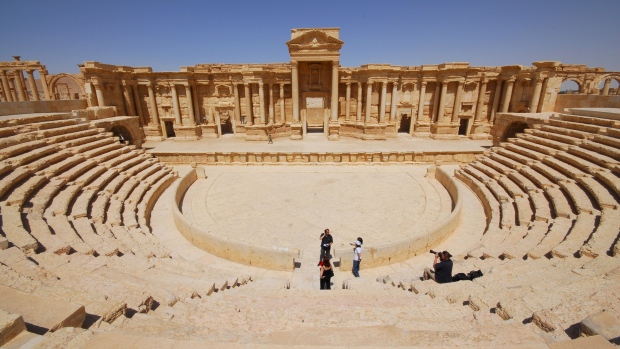-
Tips for becoming a good boxer - November 6, 2020
-
7 expert tips for making your hens night a memorable one - November 6, 2020
-
5 reasons to host your Christmas party on a cruise boat - November 6, 2020
-
What to do when you’re charged with a crime - November 6, 2020
-
Should you get one or multiple dogs? Here’s all you need to know - November 3, 2020
-
A Guide: How to Build Your Very Own Magic Mirror - February 14, 2019
-
Our Top Inspirational Baseball Stars - November 24, 2018
-
Five Tech Tools That Will Help You Turn Your Blog into a Business - November 24, 2018
-
How to Indulge on Vacation without Expanding Your Waist - November 9, 2018
-
5 Strategies for Businesses to Appeal to Today’s Increasingly Mobile-Crazed Customers - November 9, 2018
IS beheads elderly ex-antiquities chief in Syria’s Palmyra
Archaeologist Khaled Asaad, 82, who looked after the Roman ruins in Palmyra was taken hostage by the group after it captured city in May this year, reported BBC.
Advertisement
State news agency SANA and the Britain-based Syrian Observatory for Human Rights say IS beheaded 81-year-old Khaled Asaad on Tuesday in a square outside the town’s museum.
Kalid alAsa’ad, a university professor and the former general manager for antiquities and museums in Palmyra, was beheaded in the city’s public square as militants watched, Abdulrahman said, citing alAsa’ad’s relatives in the city.
Asaad, who had worked for over 50 years as the head of antiquities in Palmyra, was detained and interrogated by Isis militants for over a month. He also had several scholarly articles published about Palmyra, which flourished in ancient times as a key trading hub along the Silk Road and is home to several Roman-era ruins, which had attracted thousands of tourists prior to Syria’s civil war.
Before the city’s capture by ISIS, Syrian officials said they moved hundreds of ancient statues to safe locations out of concern they would be destroyed by the militants.
Advertisement
Reuters said that the Roman-era ruins are believed to have not been damaged by the Isis militants, “despite their reputation for destroying artefacts they view as idolatrous under their puritanical interpretation of Islam”. One of the destroyed tombs belonged to a descendant of the Muslim prophet Muhammad’s cousin.





























